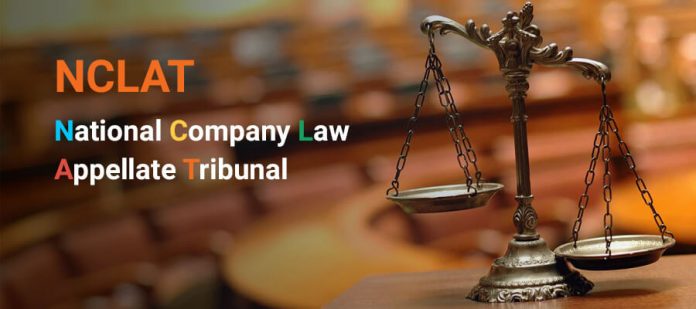This article is written by Uma Shankar Mishra, pursuing a Certificate Course in National Company Law Tribunal (NCLT) Litigation from Lawsikho.com.
Table of Contents
Meaning of NCLT and NCLAT
National Company Law Tribunal (“NCLT”) and National Company Law Appellate Tribunal (“NCLAT”) were established as a part of reforms in India’s Company Law and as a part of reforming Companies Law. On June 01, 2016, the Ministry of Corporate Affairs (“MCA”) published a notification regarding the constitution of the National Company Law Tribunal (NCLT) and National Company Law Appellate Tribunal (NCLAT) with effect from June 01, 2016. It came as a big-ticket reform as the Companies Act, 1956 was enacted prior to India opening its markets in 1991 and the periodic amendments to the 1956 Act could not satisfy the current needs of Industry, market regulators. NCLT and NCLAT were established as per powers granted to MCA under Section 408 and Section 410 of Companies Act, 2013, respectively. These sections explain the meaning of NCLT and NCLAT in a clear way and we can look at these sections to get an overview of NCLT and NCLAT.
Section 408 of Companies Act, 2013 defines NCLT and it specifies that the Central Government shall constitute a Tribunal to be known as the National Company Law Tribunal composing of President and other Judicial and Technical members, to exercise and discharge powers and functions as prescribed by the Act or any other power delegated to them by way of any other enactment or a Notification by Ministry Of Corporate Affairs. Similar to NCLT, NCLAT was established as per Section 410 of Companies Act which states that the Central Government, by way of notification shall constitute an Appellate Tribunal to be known as the National Company Law Appellate Tribunal comprising Chairperson and Judicial and Technical members, for hearing appeals against the orders of the Tribunal.
However, it provides a Condition that technical members of NCLAT shall not exceed 11 members. Initially NCLT and NCLAT were given Jurisdiction over the Following matters:
- Board for Industrial and Financial Reconstruction. (“BIFR”)
- The Appellate Authority for Industrial and Financial Reconstruction. (“AAIFR”)
- Jurisdiction and powers relating to winding up restructuring and other such provisions, vested in the High Courts.
- Company Law Board (“CLB”).
It is important to note that the Company Law Board would cease to exist after the establishment of NCLT and NCLAT as per Section 466 of Companies Act, 2013.
Difference between NCLT and NCLAT
Though NCLT and NCLAT were established by the virtue of same Companies Act but there is some difference between them which is explained in the following table:
|
S. No |
NCLT |
NCLAT |
|
1 |
NCLT is established as per Section 408 of Companies Act, 2013. |
NCLAT is established as per Section 410 of Companies Act, 2013. |
|
2 |
NCLT is a body having original Jurisdiction. |
NCLAT is a body having Appellate Jurisdiction. |
|
3 |
Cases can come to NCLT directly. |
No case can come to NCLAT directly, it must either come from NCLT under Section 421 of Companies Act, 2013 or any other body given in Section 410 of Companies Act, 2013. |
|
4. |
NCLT does not deal with cases involving Competition law or appeals from the National Financial Reporting Authority. (“NFRA”) |
NCLAT is designated as appellate forum for orders passed by the National Financial Reporting Authority (“NFRA”) and Competition Commission of India as per powers granted to it under Section 410 (a) and 410 (b) of Companies Act, 2013 respectively. |
|
5 |
NCLT has not replaced the Competition Appellate Tribunal. (“COMPAT”) |
NCLAT as per part XIV of chapter VI of the Finance Act, 2017, (which amended Section 2(ba) and 53A of the Competition Act, 2002 and Section 410 of the Companies Act, 2013) has replaced the Competition Appellate Tribunal. (“COMPAT”) |
|
6 |
NCLT has 16 benches throughout India. |
NCLAT has two benches throughout India one at New Delhi and another at Chennai. The Chennai bench of NCLAT has been notified[1] on 15/03/2020 but is yet to be functional. |
Background of NCLT
The need for a uniform code for adjudicating corporate disputes was first suggested by the Justice Eradi Committee which was set up by Central Government in the year 1998 for reforming the law related to insolvency of companies and winding up. The Committee submitted its report in the year 2000 and as per the recommendation of the Committee, Companies (Second Amendment) Act, 2002 was passed and the amendment stated that there is a need to constitute National Company Law Tribunal and National Company Law Appellate Tribunal which will act as a Uniform body for Adjudicating Corporate Disputes. There were various legal challenges to it and the constitution of NCLT and NCLAT under Companies (Second Amendment) Act, 2002 were challenged on ground that it is unconstitutional.
However, the constitution bench of Supreme Court in the case of Union of India v. R. Gandhi[2] upheld the constitutionality of NCLT and NCLAT by giving guidelines relating to number of judicial members, number of technical members and tenure of members to be followed during the constitution of NCLT and NCLAT.[3] Though the Union Government did not notify the Constitution of NCLT and NCLAT and instead incorporated it by way of Companies Act, 2013, even then another legal challenge came in way of establishment of NCLT and NCLAT in the case of Madras Bar Association vs. Union of India & Anr[4] where the petitioners challenged the constitution of NCLT and NCLAT under Companies Act,2013 on ground that the constitution of NCLT and NCLAT does not incorporate and follow the guidelines given by Hon’ble Supreme Court in the case of Union of India v. R. Gandhi. The Supreme Court of India upheld the constitutionality of NCLT and NCLAT and stated that following Guidelines needs to be followed while constituting NCLT and NCLAT:
(i) Qualifications and other terms of the President and Members of the NCLT
The Supreme Court was concerned with the qualifications of the technical Members of the NCLT as the court in the case of Union of India v. R. Gandhi stated that “only officers who are holding the ranks of Secretaries or Additional Secretaries alone should be considered for appointment as technical members of the NCLT” whereas Section 409(3) of Companies Act, 2013 Act states that Secretary to the Government of India or equivalent officers are eligible for appointment as technical members of NCLT and NCLAT. Therefore, SC stated that corrections need to be made to Section 409(3) of Companies Act,2013 so that it follows guidelines made in Union of India v. R. Gandhi.
(iii) Structure of selection committee for the appointment of members
Supreme Court was concerned with selection committee and powers granted to it under S. 412 (2) Of 2013 act which provided for a 5-member selection committee without a casting vote to the Chief Justice of India (or nominee) as it was against observations made by SC in sub-para (viii) of para 120 of Union of India v. R. Gandhi where it stated a 4-member committee to be headed by the Chief Justice of India (or nominee) with a casting vote. And it thus it held Section 412(2) of the Act, 2013 were not valid and issued direction is issued to remove the defect.
Transition from CLB to NCLT and NCLAT
As seen earlier the Journey from Company Law Board (“CLB”) to National Company Law Tribunal (“NCLT”) has not been smooth and has been full of legal challenges in various cases as well as procedural bottlenecks. Even after legal challenges were overcome by the Judgement of Supreme Court in the case of Madras Bar Association vs. Union of India & Anr[5] where the Apex Court held that constitution of both NCLT and NCLAT is constitutionally valid and under Indian Constitution, it is open for the legislature to establish tribunals as alternatives to the courts as a forum for adjudication on specialized matters, provided the tribunal in question has all qualitative trappings and competence of the court sought to be replaced. Even then there were questions regarding the status of pending matters before CLB, BIFR, AAIFR and matters relating to company’s accounts, freezing of assets, class action suits, conversion of a public company to a private company which were pending at different High Courts, when their jurisdiction was transferred to NCLT, the power from existing bodies to NCLT and NCLAT was transferred gradually by the way of notification. However, cases initiated before the CLB under Companies Act, 1956 were immediately transferred to the NCLT.
- Proceedings pending before the Board for Industrial and Financial Reconstruction (BIFR), Sick Industrial Companies (Special Provisions) Act, 1985 (SIC Act”) and Appellate Authority for Industrial and Financial Reconstruction (AAIFR)would be abated and need to be referred to NCLT within 180 days of the formation of NCLT for the continuance of old proceedings.
- Competition Appellate Tribunal (“COMPAT”) which used to deal with the appeal of orders passed by the Competition Commission of India which has been bestowed upon NCLAT by the passage of Part XIV of Chapter VI of the Finance Act, 2017. This exercise was done with an intention to rationalise the working of tribunals. Though there have been concerns over increasing load over NCLAT, the government has gone ahead with it. A possible solution could be having a dedicated bench at NCLAT to oversee appeals from the Competition Commission of India.
The below chart explains the how proceedings before old courts would be transferred to NCLT in a Phased matter:

The above chart briefly explains the system of adjudication of corporate disputes prior to the establishment of NCLT and after the establishment of NCLT.
Conclusion
NCLT and NCLAT have been established to act as a uniform forum for adjudicating disputes relating to working of companies where adjudicating it in a timely manner will help in smooth running of the economy. The earlier regime of the Company Law Board failed miserably because they were not useful in adjudicating disputes in an effective and time bound manner. The earlier regime had a lot of bottlenecks which did not help to revive Sick Companies and instead led to prolongation of cases. Though NCLT and NCLAT are doing great work in streamlining the system, a lot more needs to be done. There is a need for improving the infrastructures at these Tribunals, increasing the Number of Benches as well as sanctioning of judges which will help in deciding cases in a time bound and effective manner and thus would reduce precious time and resources of companies which can be used by companies in growth of economy of India.
References
[1] https://www.barandbench.com/news/litigation/centre-notifies-constitution-of-chennai-bench-of-national-company-law-appellate-tribunal
[2] [2010] 11 SCC 1
[3] Detailed guidelines can be accessed at https://www.indialawjournal.org/archives/volume3/issue_3/article_by_vyapak_desai.html
[4] (2015) 8 SCC 583
[5] (2015) 8 SCC 583
Students of Lawsikho courses regularly produce writing assignments and work on practical exercises as a part of their coursework and develop themselves in real-life practical skill.
LawSikho has created a telegram group for exchanging legal knowledge, referrals and various opportunities. You can click on this link and join:
 Serato DJ Crack 2025Serato DJ PRO Crack
Serato DJ Crack 2025Serato DJ PRO Crack











 Allow notifications
Allow notifications



